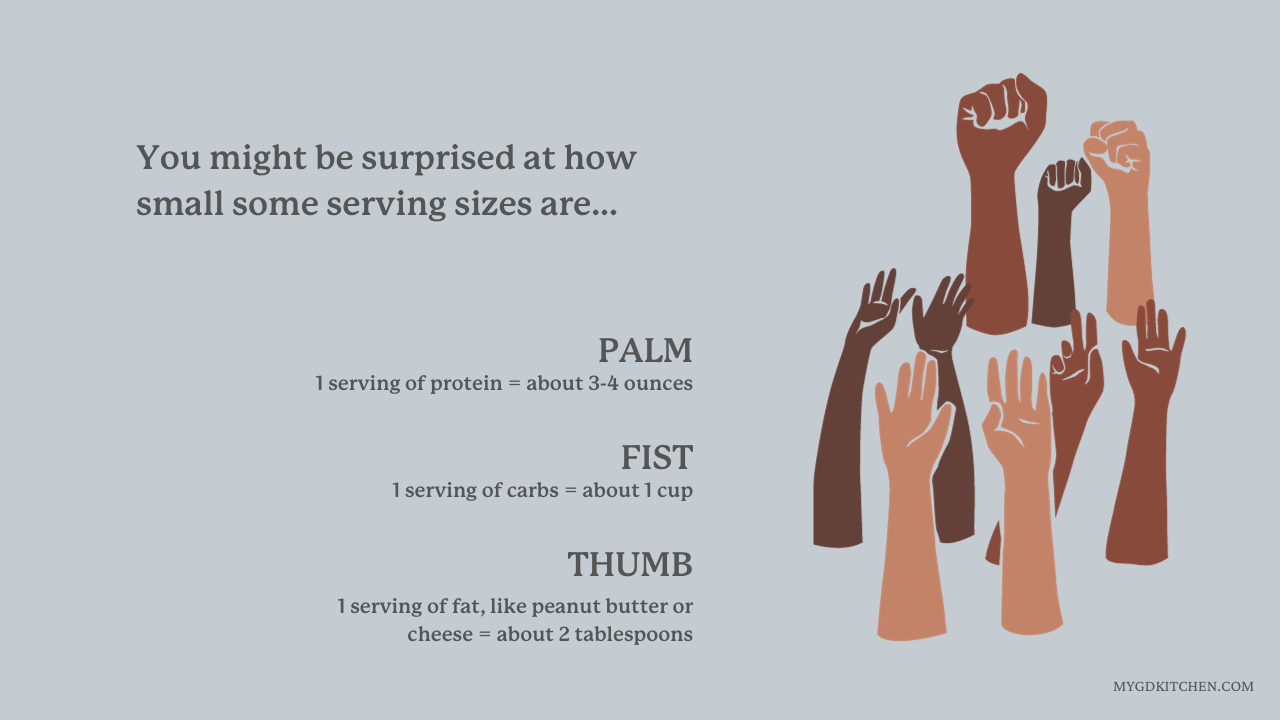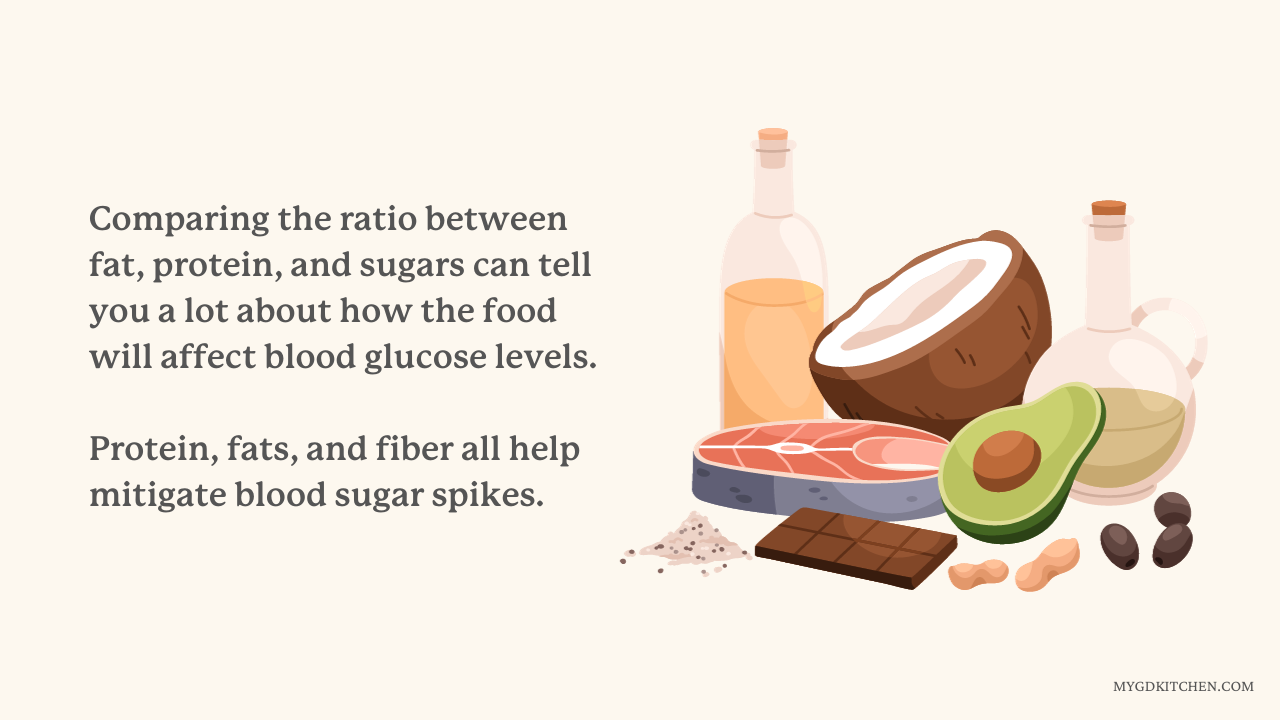How to Read Food Labels When You Have Gestational Diabetes

Written by Cristina Sciarra. Reviewed by Jamie Askey, RN.
Introduction
When you have gestational diabetes, the goal is to eat foods that will help keep your blood sugar levels stable. It is easy to say, “avoid sweets” or “eat high fiber foods,” but if you do not know what to look for on a prepared food label, it may be difficult to figure out which options are best. Unless a GDM-knowledgeable nutrition specialist gives you a set meal plan to follow, you will need to create your own out of the best choices at the local grocery store.
What foods can you include in your gestational diabetes meal plan? What foods should you avoid? It all comes down to learning how to read prepared food labels correctly.
What Parts of a Food Label Are Most Important for GDM?
When planning what to eat after your gestational diabetes diagnosis, food labels will become your friends. Whether you rely mostly on prepared foods, prefer whole grains, fresh meat and fish, eggs, and vegetables, or fall somewhere in between, it’s important to understand how each affects your blood glucose levels. This knowledge will be a helpful tool in taking control of your health.
Always Check the Serving Size First
You might be surprised at how small some serving sizes are if you are used to eating based on taste or cravings. The serving size of average potato chips, for example, is only about 15 chips. A serving size of yogurt is two thirds of a cup or 6 ounces. Unless you purchase the smaller size of individual serving products, you may inadvertently eat more than you expect.
In the United States, there are certain allowed discrepancies between what the food actually contains and what is put on the label. Of course, every single cookie will not have the exact same number of calories. Also, terms like “sugar free” and “fat free” do not actually mean that the food has zero of these nutrients. They are allowed up to half a gram per serving and still claim this designation. Therefore, if you eat more than one serving, you could add more sugar to your diet than you expect.

For example, heavy cream typically has a serving size of one tablespoon, and labels will show 0 grams of carbs per serving. But a cup of heavy cream actually has 6 grams of carbohydrates. The opposite can also be true. Some foods may appear to be high in carbohydrates, but in reality, the serving size is large.
Similarly, foods like quinoa expand as they cook, so their serving size is misleading. A 1/4 cup serving of dry quinoa has about 33g of carbohydrates, but when cooked, that 1/4 cup turns into a 3/4 of a cup serving. Suddenly, that 33g isn’t as “scary” because you’ll probably only eat a little more than 1/4 cup at a time.
Quinoa has a low glycemic index, so this may be something you want to incorporate into your diet (with your doctor’s permission). Understanding how serving sizes work with these types of foods can help you read labels more accurately.
When you have gestational diabetes, learning how to read food labels is crucial to staying healthy. Use the tips above to learn how to read labels more accurately and choose the right foods for your diet

Calorie Aren’t King When It Comes to GDM
Serving sizes and what each one contains defines how many calories nutrients, fat, etc. are in a particular food. Each woman’s individual caloric needs depend on a variety of factors including age, height, current weight, and various health markers. Discuss this with your healthcare provider or see a gestational diabetes-focused nutritionist or dietician for more help. Calories per serving are usually the top listing on a food label, so they are quite easy to find.
When it comes to gestational diabetes specifically, calorie intake matters far less than balancing macronutrients. While they matter for overall health, a GDM diagnosis doesn’t change caloric recommendations.
After determining precisely how much of each food you are supposed to eat at one time, look closely at the nutrition information. For those with gestational diabetes, carbohydrates deserve the most attention.
Carbohydrates in All Their Forms
Carbohydrates are the most important thing to track when you have been diagnosed with gestational diabetes. These are the things that determine glycemic index positioning for specific foods and how much they will affect your blood sugar levels.
Food labels break down carbohydrates into total carbs, dietary fiber, and sugar. Fiber does not raise blood sugar. Instead, it helps mitigate spikes and stabilize levels for a longer period of time. It is a healthy addition to your diet for non-GDM-related reasons, too.
In general, when you have gestational diabetes, it is best to avoid foods with high sugar amounts per serving. When reading food labels, make sure you’re paying attention to added sugars – they can be sneaky. These sugars are:
- Added to foods and drinks as they’re being processed
- Not naturally occurring (like the sugar you find in fruit)
It can be challenging to know what’s “added” sugar and what’s not because they can go by many names, including:
- Brown sugar
- Dextrose
- Cane juice
- Fructose
- Fruit nectars
- Honey
- Malt syrup
- Raw sugar
- High fructose corn syrup
- Maple syrup
- Lactose
- Sucrose
Sugar is sugar, no matter what name is listed.
Keeping Track of Fats in Your Diet
It also helps to keep track of how much fat you get in your diet. Like carbohydrates, fats are broken down into different sections. You see the total fat first, and then data about saturated fats and trans fats. While certain types of fat are considered healthier than others, one type of fat is not better than another when treating gestational diabetes specifically.

Processed foods with saturated or trans fats may have more simple carbohydrates as well. This is especially prominent in baked goods and junk food. Comparing the ratio between fat, protein, and sugars can tell you a lot about how the food will affect blood glucose levels. Protein, fats, and fiber all help mitigate blood sugar spikes.
Some nutritional labels also list total cholesterol. For most people, dietary cholesterol has very little impact on the cholesterol numbers they get from their doctor after a blood test. It does not affect blood glucose levels at all. Therefore, eating some is not going to make your gestational diabetes worse or less manageable.
Optimum health requires a variety of nutrients, vitamins, and minerals. Although they may not affect gestational diabetes and blood sugar levels directly, it helps to opt for foods with well-rounded nutrition. Unless your physician suggests avoiding certain things, look for meals and snacks with many of the same vitamins and minerals you get from your prenatal vitamins or regular multivitamins.
List of Foods to Eat with Gestational Diabetes
Besides reading labels accurately, it also helps to understand the glycemic index. Anything with low sugar levels, higher protein, and high fiber is probably a good choice. This includes things like whole grains like brown rice and barley, non-starchy vegetables like broccoli, peppers, and green beans, protein sources like meat, fish, and eggs, and fibrous fruits like apples and berries.
Conclusion
While understanding how to read labels to find the best food for gestational diabetes, this does not mean you can never treat yourself. Of course, listen to your physician above all else, and make sure you follow your treatment plan.
Where Can I Get More Support?
GD Kitchen! I created this resource to solve a problem I wish someone had already solved before my first GD pregnancy. I teamed up with OB Rachael Sullivan, DO and nutritionist Jamie Askey, RN, so that you'll have all the resources, and all the confidence, I wish I’d had.
Looking for more? Check out the Blog, or try six free recipes here.
What else do we offer? Read more about The GD Starter Pack and The Recipe Membership.





